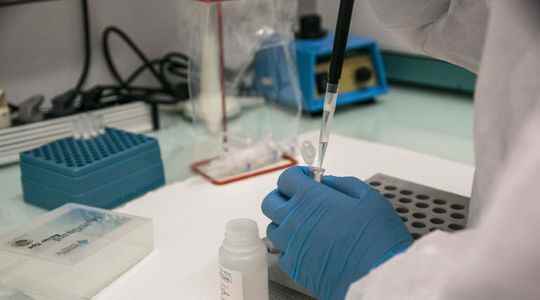This Thursday, September 1, the Argentine regional health authorities announced the death of a third person suffering from a disease so far unidentified. A mysterious pneumonia, new cases, and already a few deaths… This news is atrociously similar to that which preceded the tidal wave caused by the Covid-19 pandemic. For now, the scientists interviewed by L’Express want to be reassuring, although they recommend following the phenomenon closely. Here’s what we know.
- How many people are affected, and what are their symptoms?
Nine people, including eight members of the nursing staff at the same private clinic in Tucumán, in northwestern Argentina, began to show symptoms of a respiratory pathology between August 18 and 22, 2022. Some patients are hospitalized, other less affected people have been isolated at home.
All seem to be suffering from bilateral pneumonia, that is to say a disease of both lungs. “Patients show x-rays very similar to Covid-19,” the local press Luis Medina Ruiz, in charge of health issues for the province of Tucumán. However, it is not about the coronavirus. 25 virus germs have already been tested, including Covid-19, several flus, the common cold, and a hantavirus, without the tests reacting.
- How is the situation evolving?
On Wednesday August 31, only 6 cases had been detected, and the health services had then qualified the situation as being “under control”. The province then reported two deaths. The first was announced on August 29, and the second, aged 45, on August 31. This Thursday, three new cases were added, and another death occurred, which caused a change of tone in Tucumán. “The province is going through a complex situation,” acknowledged Luis Medina Ruiz.
The third victim is “a 70-year-old patient, who was hospitalized” for surgery in the same clinic where the other cases are members of the nursing staff. Health authorities in the province suspect her of being “patient zero”, but investigations are still ongoing.
For the moment, the phenomenon is under close surveillance, without it being known whether it presents a risk of propagation. “The information available (AFP dispatch) does not allow risk analyzes to begin but strongly encourages monitoring the situation very closely. That several health professionals have pneumonia of unknown origin and simultaneously, this is not a good However, it is absolutely necessary to verify this information, and to collect new ones”, indicates to L’Express Mahmoud Zureik, epidemiologist at the High Council for Public Health.
Mircea Sofonea, epidemiologist at the University of Montpellier, also puts it into perspective, even if the phenomenon can impress, especially after two years of confinement and trauma. “We must not be afraid, as long as we do not have all this information. To trigger the red alert, it is necessary to bring together a series of signals, there are many missing. There are often epidemics which start and s The Covid-19 pushes to take a closer interest in emerging infectious diseases, but we cannot worry even before having collected enough elements”, nuances the researcher.
- Can we speak of an epidemic?
Not yet. “We speak of an epidemic when there is an increase in incidence over several weeks. An epidemic begins with a few sporadic cases, then by active circulation, in a population, which can be a village, a region. If the cases are restricted to a care establishment, as seems to be the case, it is too early to speak of an epidemic”, specifies Mircea Sofonea.
- With three deaths out of nine cases, is it a very deadly pathology?
The number of victims given the identified patients is impressive, but it does not necessarily mean that the unknown pathogen is very deadly. “If this ratio is confirmed, this would place this disease as very lethal, at a level equivalent to Mers. But it is likely that doctors have so far only identified severe cases, not moderate and asymptomatic cases. C “This is how the mortality of Covid-19 has dropped, compared to the first hypotheses. It is also still too early to comment on this question”, explains Mircea Sofonea.
- What are the tracks?
The Minister of Health of Tucumán estimated this Wednesday that the origin of the pathology could be an infectious agent, but that “toxic, environmental causes” were not excluded. Analyzes are also underway on water and air conditioning systems. “It could, for example, be pneumonia due to legionellosis, but it is very difficult, in the current state, to know which tracks to favor”.
Another track: a known pneumonia, but uncommon, therefore more rarely tested. “We cannot test all known pathogens at once,” says epidemiologist Mircea Sofonea. It takes time, and if the pathogen is truly unknown, identifying it exactly can take much longer.” no”, lists the scientist.
- What are the health authorities doing?
Samples have been sent to the National Administration of Laboratories and Health Institutes for further analysis. The health center, which seems to be the epicenter of this phenomenon, has been isolated, according to the local press. The European Center for Disease Control has been monitoring this cluster of cases since Tuesday. The World Health Organization is also mobilized
